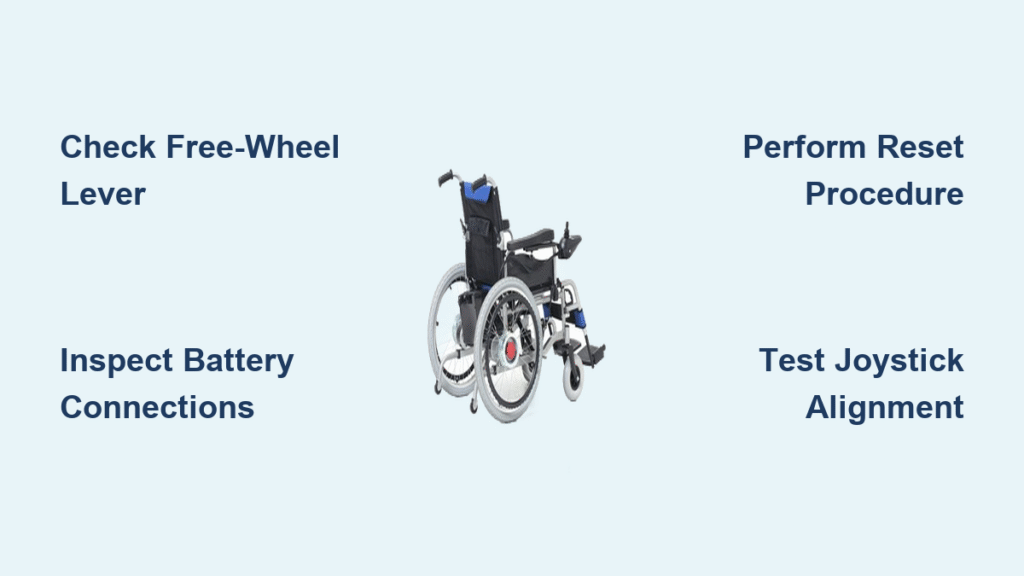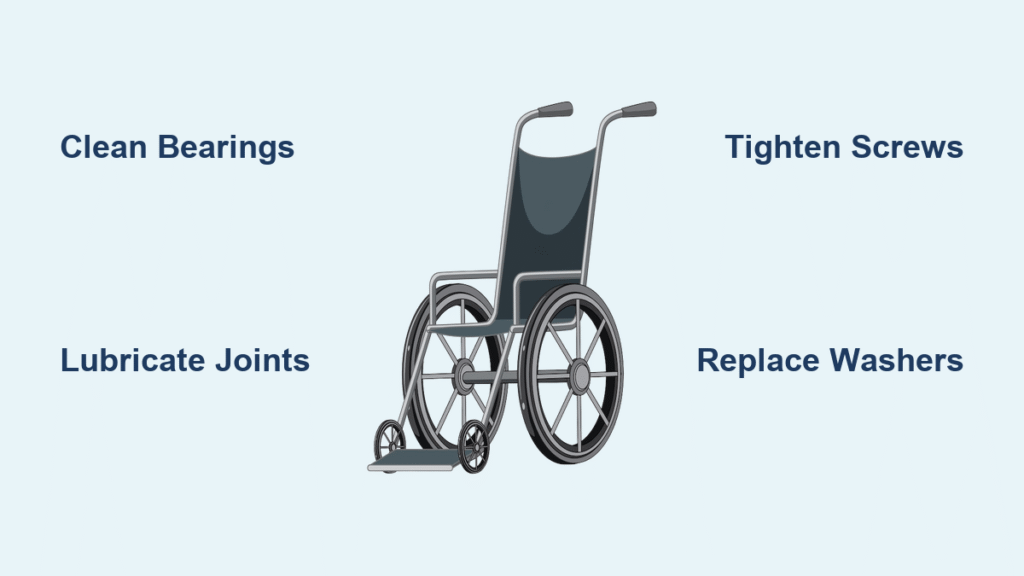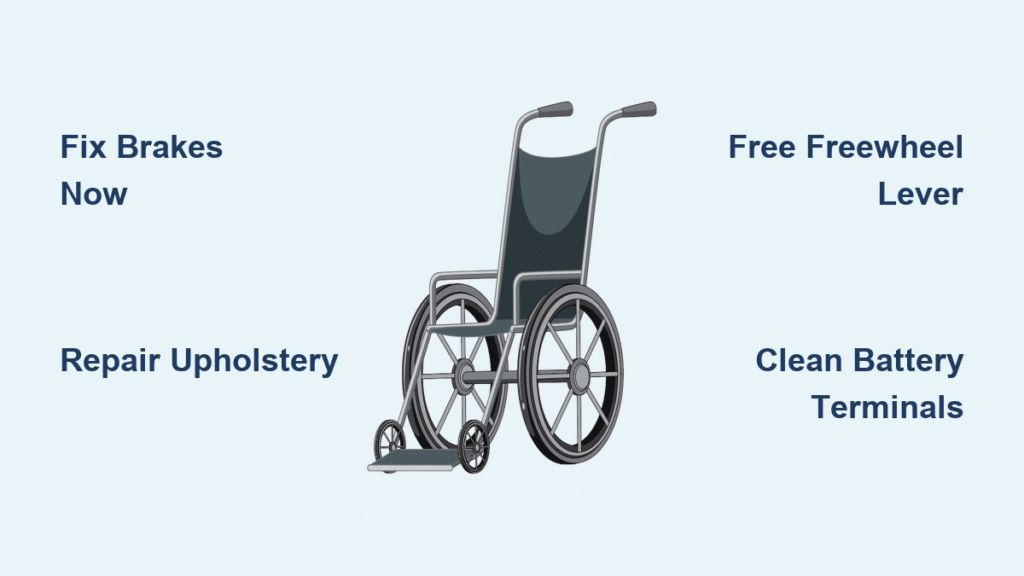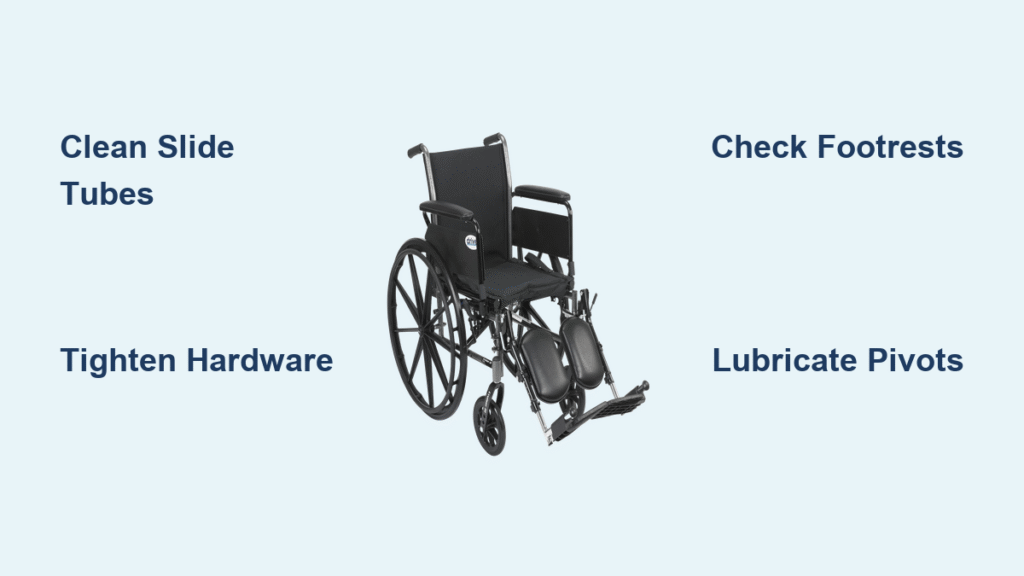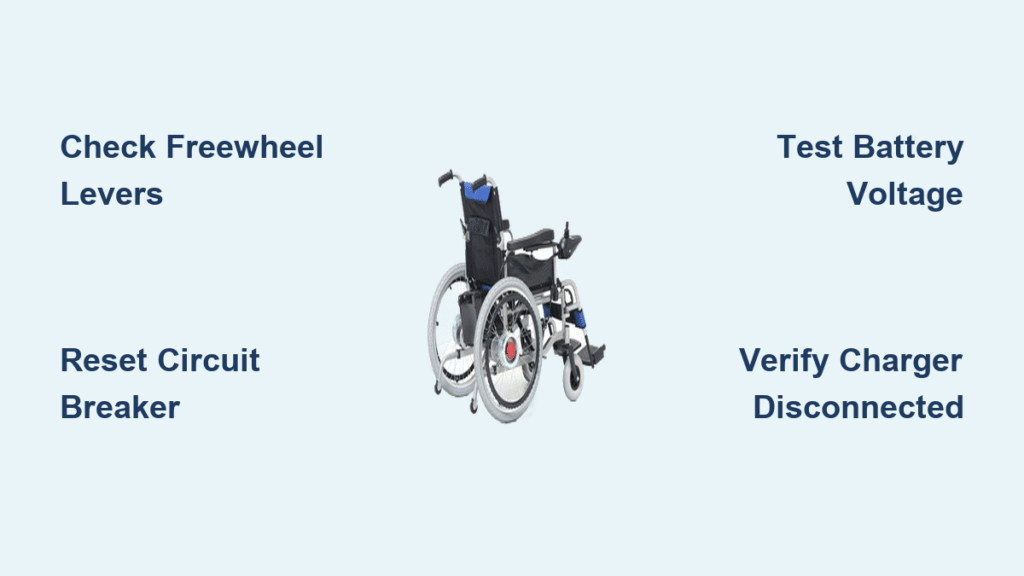Your electric wheelchair suddenly stops moving halfway across the grocery store parking lot, or the joystick becomes unresponsive while navigating your favorite park path. These frustrating moments can leave you stranded and anxious when your mobility depends on reliable equipment. Most electric wheelchair issues stem from predictable problems that you can often diagnose and fix yourself with basic troubleshooting knowledge.
This practical electric wheelchair troubleshooting guide provides immediate solutions for the most frequent malfunctions. You’ll learn systematic checks to perform before panicking, recognize warning signs that indicate deeper issues, and understand when professional service becomes necessary. With these techniques, you’ll minimize downtime and maintain your independence.
Free-Wheel Lever Position: The #1 Cause of “Dead” Wheelchairs
If your electric wheelchair won’t move despite showing a full battery charge, check the free-wheel lever before assuming catastrophic failure. This small lever, typically located on the back of your wheelchair near the motors, disconnects the drive system for manual pushing. When accidentally left in the “unlocked” position, your chair becomes completely unresponsive to controls.
Flip the lever to the “locked” position and test movement immediately. This simple fix resolves what many users mistakenly report as major electrical failures. If you frequently transport your wheelchair in a vehicle, verify the lever remains locked after reassembly—vibration during transit often shifts it to the unlocked position.
Battery Connection Issues That Mimic Complete Failure
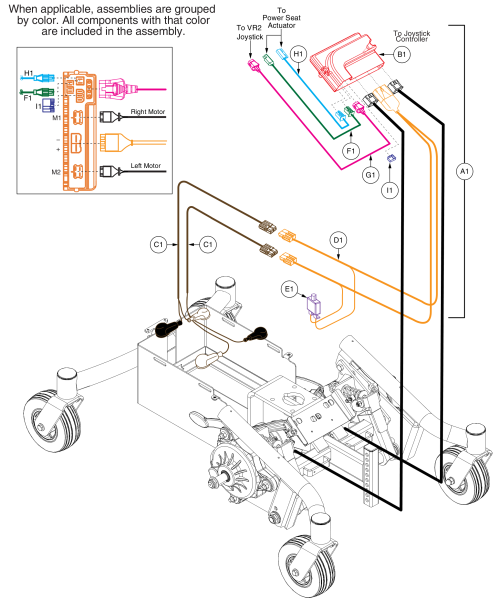
Loose battery connections create symptoms identical to dead batteries or controller failures. Start your electric wheelchair troubleshooting by locating your battery compartment and checking terminal connections. Confirm red wires connect to positive terminals and black wires to negative terminals—reversed connections cause immediate shutdowns.
Press firmly on quick-connect harnesses until you hear a distinct click, indicating proper seating. Many users report “fixed” wheelchairs after discovering these connectors appeared seated but lacked full contact. If you’ve recently charged your chair, ensure you disconnected the charger from both the wall and wheelchair—some models disable movement while connected to external power sources.
Reset Procedures for Electrical Glitches
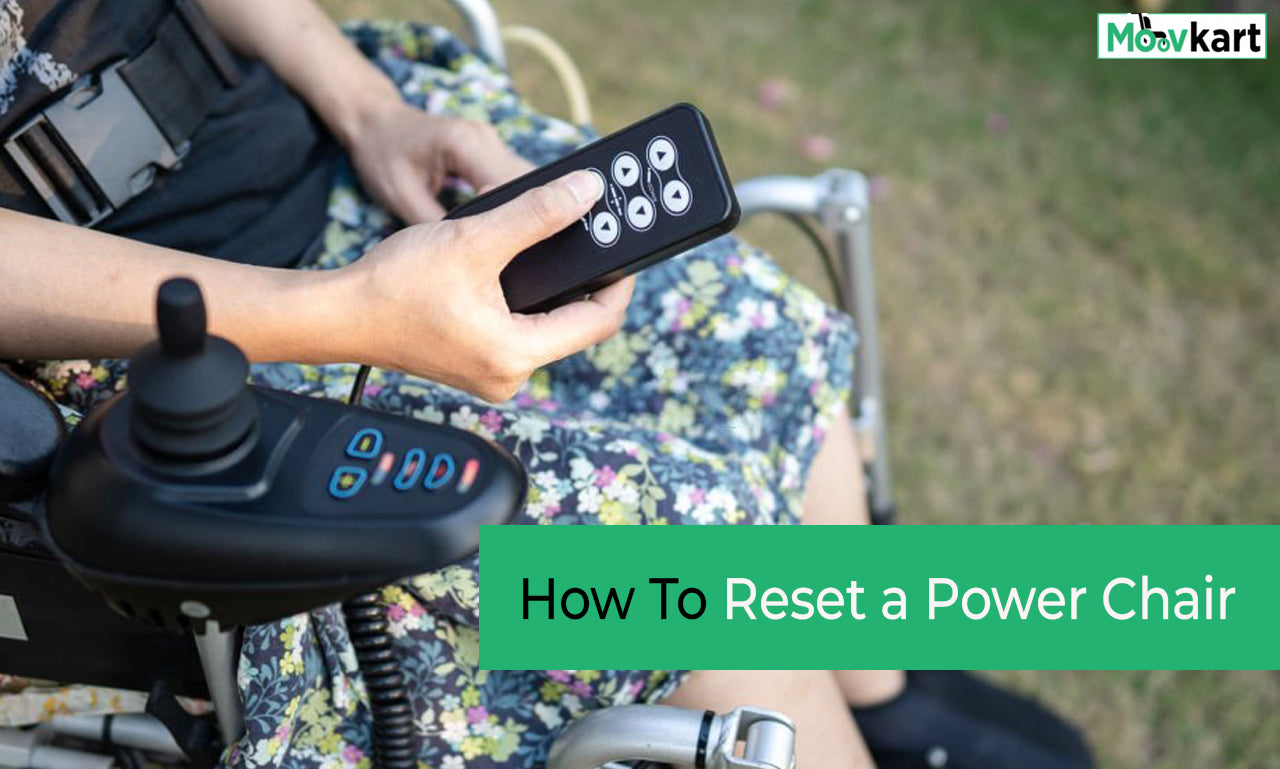
Most electric wheelchairs include an easily overlooked reset button, typically a white rubber button under the seat. When your chair suddenly loses power or responds erratically, press this button firmly for 2-3 seconds. This action resets the circuit breaker that trips during electrical surges or overload conditions.
For models with keyed ignition, remove and reinsert the key to deactivate sleep mode—a common cause of unresponsiveness after extended idle periods. If these steps don’t restore function, perform a system reboot: turn power completely off, wait 15 seconds, then restart. This clears temporary software glitches affecting control systems.
Battery Performance Problems That Limit Range
Significantly reduced travel distance on a full charge indicates battery degradation, not necessarily complete failure. Most wheelchair batteries show noticeable performance decline after 12-18 months of regular use, especially if subjected to frequent short charging cycles instead of complete discharges.
Test your charging system before replacing batteries—wall outlets controlled by light switches or connected to tripped breakers often cause false “battery failure” diagnoses. Plug another device into the same outlet to verify power. Always use manufacturer-specified chargers, as generic alternatives may damage batteries or provide insufficient voltage.
Pro tip: To maximize battery life, avoid charging after short trips. Instead, allow batteries to complete full discharge cycles as recommended by your manufacturer. This practice can extend battery lifespan by up to 30%.
Joystick Control Failures and Error Codes

Loose joystick connections cause erratic movement or complete control failure—yet many users overlook this simple fix. Ensure the joystick connector is fully seated in its power module port. Clean the mechanism monthly with a dry microfiber cloth to remove dust and debris that interfere with precise control.
Your control panel displays critical error codes when problems occur. Recognize these common indicators:
– E-100: General system error requiring reset
– E-200: Joystick malfunction needing recalibration
– 1 Beep (Merits models): Joystick not in neutral position at startup
Consult your user manual for model-specific codes. Many error conditions resolve through simple recalibration—power off the chair, center the joystick, then restart.
Motor Overheating and Weight Capacity Issues
Sudden stops during hill climbing or extended use often indicate motor overheating rather than component failure. Turn off your wheelchair and wait 10-15 minutes in a shaded area before restarting. This cooling period prevents permanent damage to motor windings.
Exceeding your wheelchair’s weight capacity dramatically reduces performance and strains motors. Check your chair’s specifications and account for all carried items—medical equipment, bags, or even clothing layers contribute to total weight. Uneven weight distribution causes pulling to one side and accelerates motor wear on the overloaded side.
Preventive Maintenance That Avoids 80% of Breakdowns
Establish a simple monthly maintenance routine to prevent most common electric wheelchair problems. Spend 15 minutes inspecting these critical areas:
– Battery terminals for corrosion or loose connections
– Tire pressure and tread wear (for pneumatic models)
– Wheel attachments for security and alignment
– Hair/debris缠绕 in casters and drive wheels
Apply wheelchair-safe lubricant to moving parts quarterly, focusing on wheel bearings and adjustment mechanisms. This simple step reduces friction, noise, and premature wear. Schedule professional maintenance every 6-12 months—technicians perform comprehensive diagnostics beyond home capabilities.
When Professional Service Becomes Essential
Seek immediate professional service for these critical issues:
– Persistent electrical problems after basic troubleshooting
– Complete power failure with verified battery charge
– Motor replacement or controller repair needs
– Brake servicing requirements
Contact your wheelchair manufacturer for authorized repair centers—they maintain technicians trained specifically on your model. Most manufacturers provide online technician locators by zip code. For emergency situations, NMEDA Quality Assurance Program Dealers offer 24-hour service for critical mobility equipment failures, especially valuable in rural areas.
Environmental Factors That Impact Performance
Extreme temperatures significantly affect electric wheelchair operation. In freezing conditions, expect 20-30% reduced range as batteries operate less efficiently. Avoid prolonged sun exposure during charging—extreme heat damages electrical components and strains motors. Outdoor terrain also impacts performance; built-in safety features automatically reduce speed when reclining or elevating seats.
Never operate your wheelchair in wet conditions that could expose electrical systems. Even light rain creates conductivity risks that could short-circuit critical components. If you must use your chair outdoors in damp conditions, wipe all electrical connections thoroughly afterward and allow them to air dry completely.
Key Takeaway
Most electric wheelchair issues resolve through systematic troubleshooting starting with simple checks of the free-wheel lever, battery connections, and reset procedures. Establish regular maintenance habits to prevent common problems before they strand you. When professional service becomes necessary, contact authorized technicians who understand your specific model’s requirements. By mastering these electric wheelchair troubleshooting techniques, you’ll maximize your mobility independence and minimize frustrating downtime. Remember: the solution to most problems lies in the simplest checks—not the most complex repairs.

